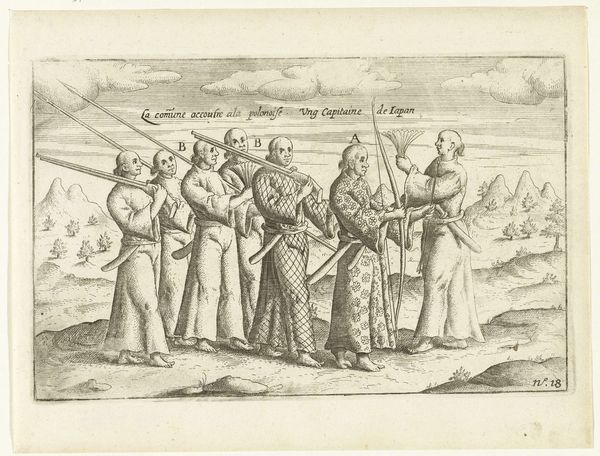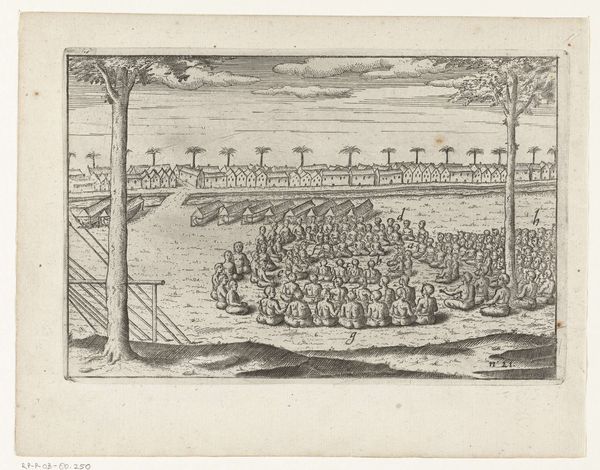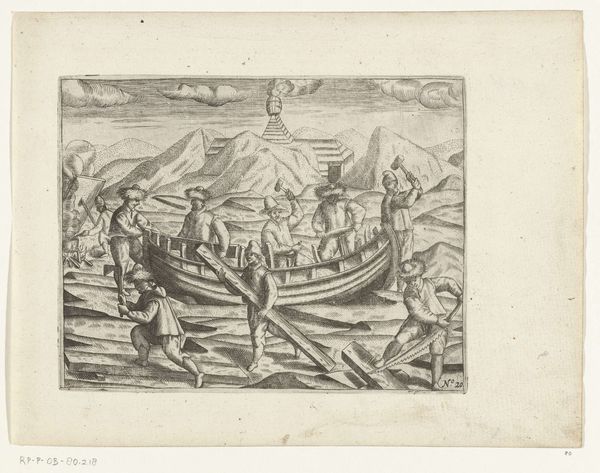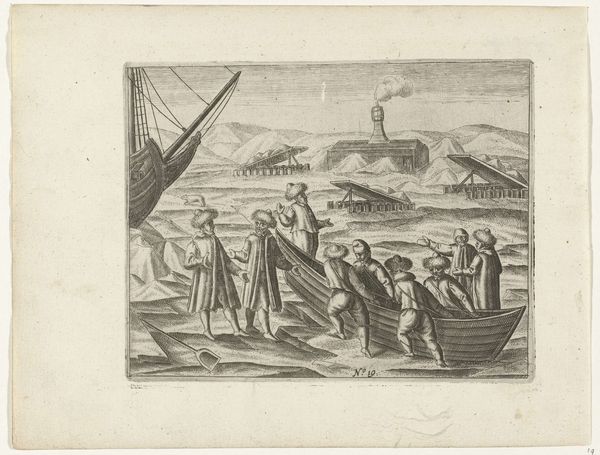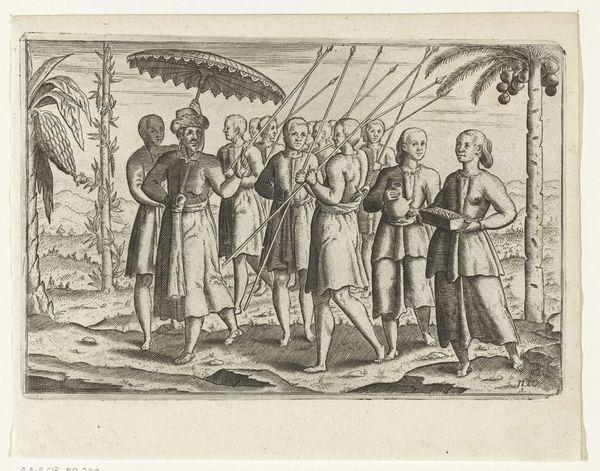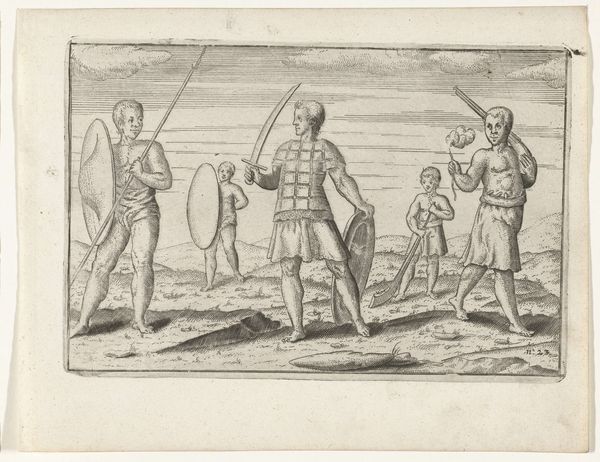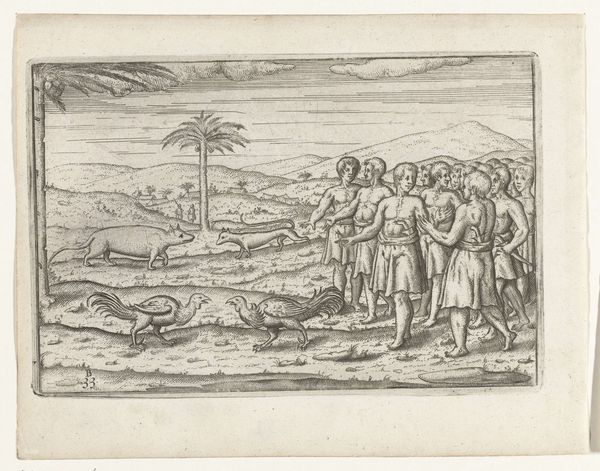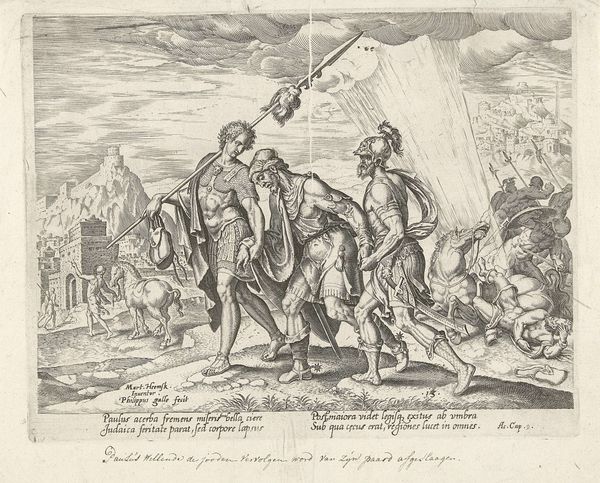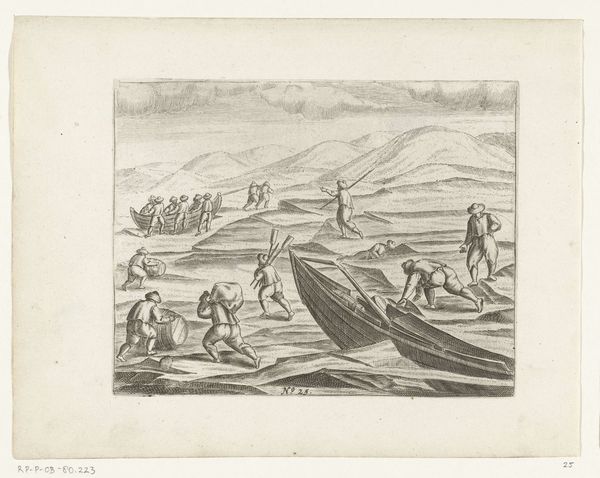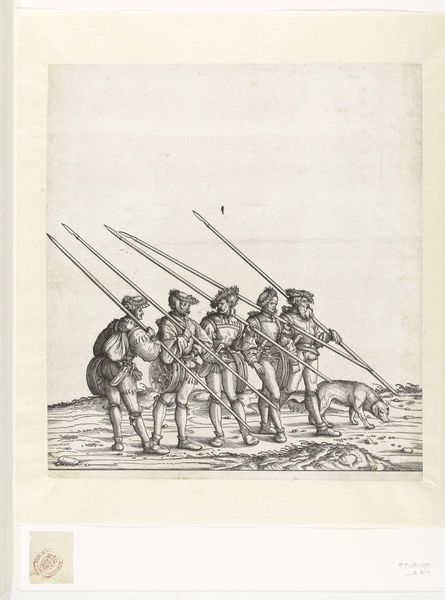
drawing, print, ink, engraving
#
drawing
#
comic strip sketch
#
narrative-art
#
dutch-golden-age
# print
#
pen illustration
#
pen sketch
#
landscape
#
figuration
#
personal sketchbook
#
ink
#
ink drawing experimentation
#
ancient-mediterranean
#
pen-ink sketch
#
pen work
#
sketchbook drawing
#
genre-painting
#
storyboard and sketchbook work
#
sketchbook art
#
engraving
Dimensions: height 145 mm, width 220 mm
Copyright: Rijks Museum: Open Domain
Curator: Here we have a work entitled "Javaanse dans, 1596." It’s an engraving that resides in the collection of the Rijksmuseum. While it's attributed to an anonymous artist, the piece offers us a window into the perception of Javanese culture during that period. What's your immediate reaction? Editor: It feels stark. The monochromatic medium, the almost regimented lines of the figures... There's something unsettling about its detachment, given the vibrant culture it purports to depict. Curator: Exactly, that's a crucial entry point. These images, circulating in Europe at the time, contributed to the construction of the "exotic" Other. This dance is not presented as an art form but more as an ethnographic display, documented for a European audience keen on learning about distant lands. Editor: The act of performance and self-expression, especially within a non-Western context, is subjected to a very specific European gaze. And the artist, of course, shapes that perception, possibly filtering it through their own prejudices and biases. How do we challenge those narratives in this setting? Curator: We contextualize, critically. By analyzing the market for these kinds of images, the motivations of the Dutch East India Company, and the limited perspectives represented in the Dutch Golden Age, we expose the power dynamics at play. These engravings served as tools to both inform and control narratives. Editor: I’m drawn to the repetitive movements and poses. There's a real erasure of individuality. The focus is not on celebrating unique skills but rather on a perceived commonality of "the Javanese". This kind of generalization can then legitimize exploitation and colonial projects. Curator: Precisely. It highlights how art serves institutional power, particularly in shaping public perceptions and rationalizing certain policies. What do you make of the setting and background of the engraving? Editor: The landscape is generic, almost a backdrop against which the 'dance' is performed, further reinforcing the sense that this isn't about genuine engagement with a specific art practice, but a presentation FOR a European audience. It’s objectifying. Curator: Absolutely. It also hints at the artificiality of the representation. The intent was never documentary accuracy; the scene reinforces pre-existing notions of the faraway land. Editor: By dissecting those representations, we reclaim agency. It's our responsibility to critically analyze the gaze and offer avenues for decolonizing the archive. This piece shows that a seemingly simple sketch contains profound historical, social, and ethical complexities. Curator: It does. Reflecting on the image reminds us how deeply power, knowledge, and art intersect. These older artworks require nuanced attention in any contemporary presentation.
Comments
No comments
Be the first to comment and join the conversation on the ultimate creative platform.
